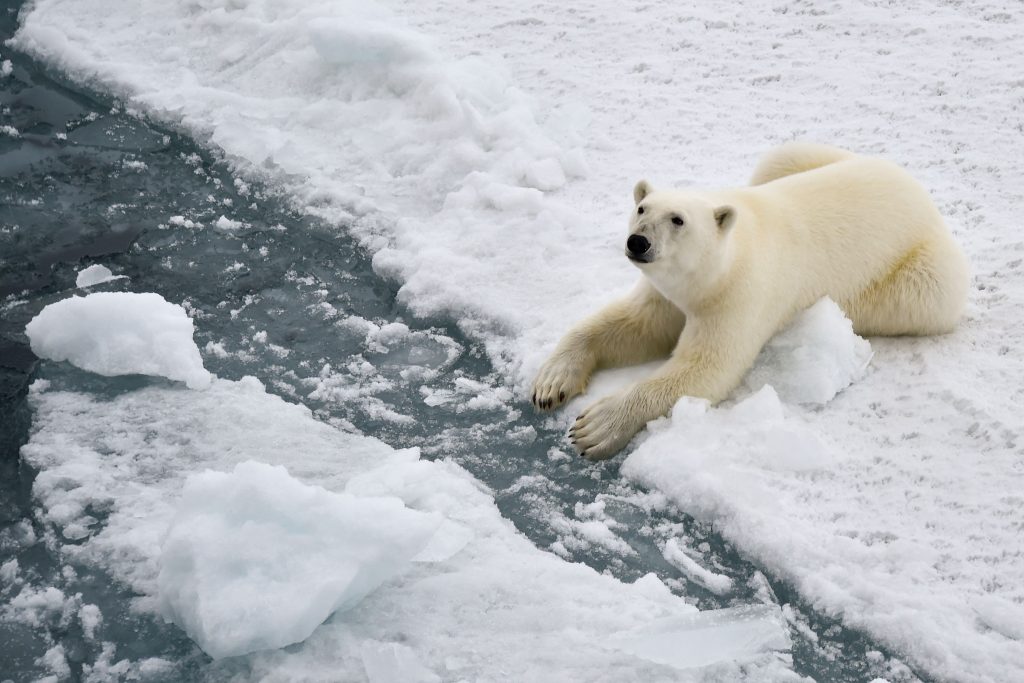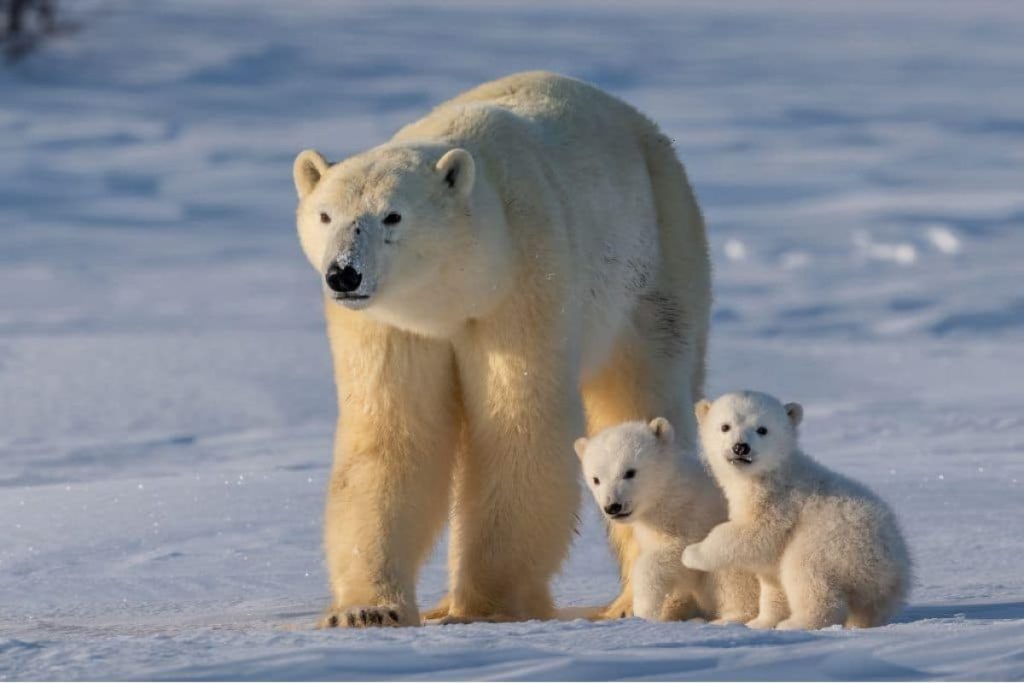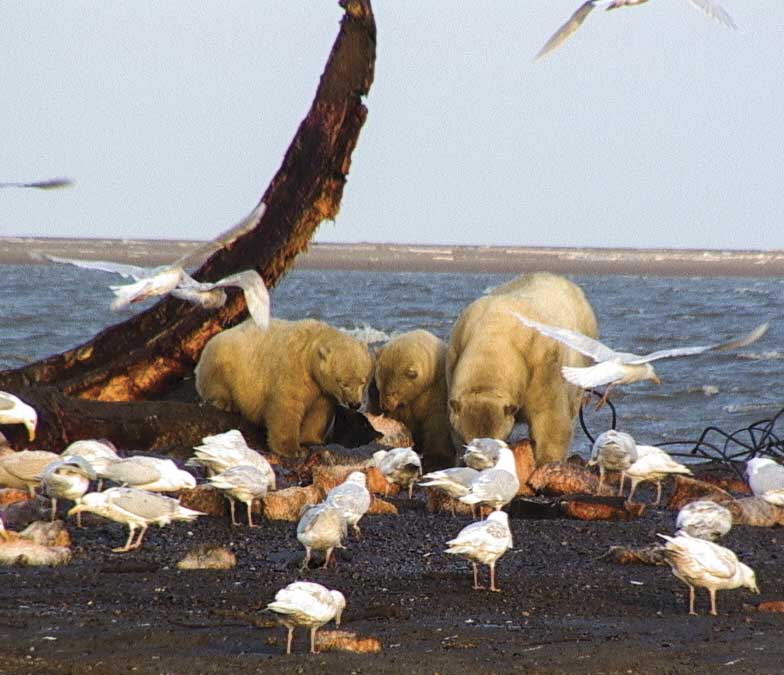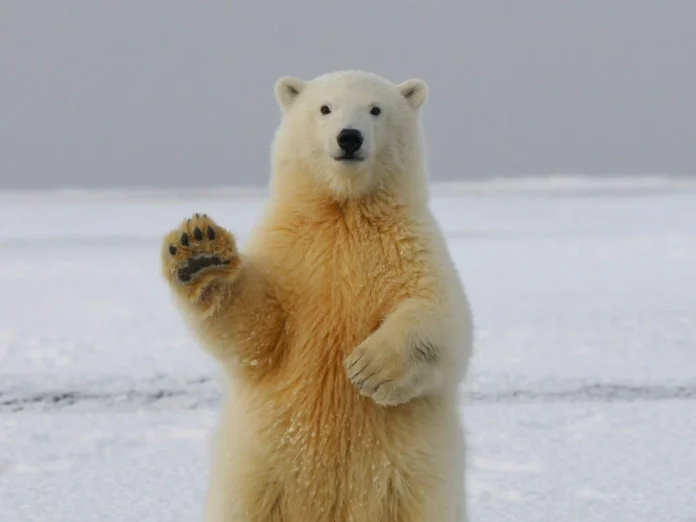As the Arctic continues to warm due to climate change, polar bears are facing increased risks from viruses, bacteria, and parasites that were once rare in their environment, according to recent research. A study focusing on polar bears in the Chukchi Sea, located between Alaska and Russia, revealed a significant rise in exposure to various pathogens over the past three decades. By comparing blood samples taken from polar bears between 1987 and 1994 with samples collected between 2008 and 2017, researchers found a marked increase in chemical markers indicating the bears had been infected by one of five different pathogens, including viruses, bacteria, and parasites.
The presence of these pathogens suggests that the Arctic ecosystem is undergoing significant changes as sea ice melts and polar bears spend more time on land, where they may encounter diseases more commonly associated with land-dwelling animals. Dr. Karyn Rode, a wildlife biologist with the U.S. Geological Survey and lead researcher of the study, stated that the increase in pathogen exposure is likely tied to the loss of sea ice, which has pushed polar bears to adapt their behavior, including increased interactions with land-based environments.

The study tested for six pathogens in total, but the most concerning findings involved five specific disease-causing agents. These included two parasites—Toxoplasma gondii, which causes toxoplasmosis, and Neospora caninum, responsible for neosporosis. Both of these parasites are known to affect land animals but have also been detected in marine mammals. Additionally, the bears showed signs of exposure to Francisella tularensis, the bacterium behind rabbit fever (tularemia), Brucella spp., which causes brucellosis, and the virus that causes canine distemper, a disease more commonly found in dogs but increasingly affecting wildlife populations.
While it remains difficult to assess how these infections may impact the overall health of polar bears based solely on blood samples, the rising incidence of pathogens is concerning. Polar bears are generally resilient to disease, as Dr. Rode noted, but the findings highlight significant shifts within the Arctic ecosystem that could affect not only polar bears but also other species in the region. As top predators, polar bears’ exposure to pathogens is often a reflection of the health of their prey and the broader environmental changes occurring in the Arctic.
Polar bears primarily feed on seals and other marine mammals, which they hunt from sea ice platforms. However, as the ice recedes earlier and forms later each year, polar bears are being forced to spend more time on land, where they struggle to find adequate food sources. Studies using collar cameras on polar bears have shown that the bears expend more energy searching for food on land but are often unable to find enough calories to sustain themselves. This extended period without access to marine prey further weakens their physical condition, making them potentially more vulnerable to diseases.

The impact of climate change on polar bears is already well-documented. There are an estimated 26,000 polar bears left in the wild, with most residing in Canada, while smaller populations are found in the United States, Russia, Greenland, and Norway. The International Union for Conservation of Nature (IUCN) lists polar bears as vulnerable to extinction, with climate change and the loss of sea ice identified as the primary threats to their survival. In the United States, they are classified as a threatened species under the Endangered Species Act.
As sea ice continues to disappear, polar bears are increasingly being seen swimming long distances in search of food or new hunting grounds. Some bears have been spotted up to 100 kilometers offshore, relying on their strong swimming ability and slightly webbed paws to propel themselves through the water. However, these extended swims are energetically costly and can further weaken bears already struggling to find sufficient food.
Polar bears’ powerful sense of smell, which can detect prey from up to 16 kilometers away, is one of their key hunting tools. When they are forced onto land, however, this ability becomes less useful, as they no longer have access to their primary prey—seals. Instead, polar bears on land often scavenge or attempt to hunt terrestrial animals, but these efforts provide far fewer calories than the blubber-rich diet they normally rely on.
The changes in the Arctic are also influencing the types of diseases circulating among wildlife. As the sea ice melts, polar bears are coming into closer contact with land-based animals, increasing their risk of exposure to pathogens that were previously less common in the Arctic. For instance, Toxoplasma gondii is often spread through cat feces, which can contaminate soil and water sources. While there are no domestic cats in the Arctic, migratory birds or other animals may act as vectors, spreading the parasite to polar bears and other marine mammals.

The study’s findings suggest that the increased pathogen exposure in polar bears is part of a broader trend affecting the entire Arctic ecosystem. Other species, including the seals and fish that polar bears hunt, are also likely experiencing similar changes in their exposure to diseases as their habitats shift. This underscores the interconnectedness of Arctic species and the cascading effects that climate change can have on the health of the entire ecosystem.
In conclusion, the research provides valuable insight into the growing health risks faced by polar bears as the Arctic warms. While polar bears have historically been resilient to disease, the rise in exposure to pathogens signals that the rapidly changing environment is creating new challenges for the species. As sea ice continues to melt and polar bears are forced to spend more time on land, their interactions with other species—and the diseases those species carry—are likely to increase. This study highlights the urgent need for continued research and conservation efforts to protect polar bears and preserve the fragile Arctic ecosystem they depend on.




